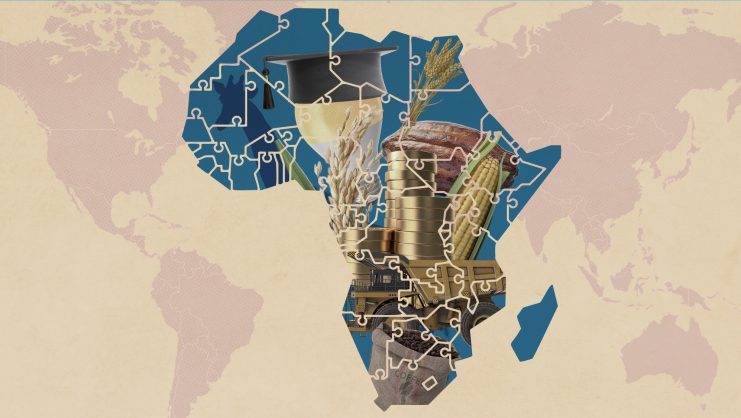What are the main challenges that the financial sector must face worldwide?
Besides the aging of technological infrastructure, the biggest challenge for the global financial sector is the steady decline in interest rates. As the population ages, the level of savings has to rise in order to cover medical and retirement expenses and insurance companies have to mobilize more money to meet their obligations. This tendency to save more also has an impact on consumption.
And what role are new technologies playing in the transformation of the financial sector?
We are at the doorstep of the fourth industrial revolution, witnessing the convergence of digital and physical assets, as well as biological science. More and more businesses are going digital. Digital labor robots are being used in white-collar jobs, sensors are being integrated into clothing, 3D printing is being used for digital-to-physical transfer, the car-sharing economy is becoming a reality, big data and artificial intelligence (AI) are being used in a big way—in fact, AI will soon be a part of corporate boards—and blockchain is increasing our ability to store information.
All these changes will have a considerable impact on the financial industry. Alternative digital-based financing such as crowdfunding, peer-to-peer lending, and community sharing are also growing in popularity and are going to put pressure on the entire industry. The digital business requires less investment in tangible assets and more investment in intangible assets. However, banks prefer to provide loans to firms and individuals that can provide tangible assets as collateral. Banks and other financial service providers will have to change not only their business model but also the way they offer their services by using big data, AI, or other approaches.
The digital business requires less investment in tangible assets and more investment in intangible assets. However, banks prefer to provide loans to firms and individuals that can provide tangible assets as collateral.
You know the Indian market well. How is India embracing the digital transformation?
I would like to mention two examples. First, a government demonetization decision which took high denomination banknotes out of circulation actually played a significant role in raising people’s awareness about digitalization. I am not saying whether the demonetization decision was good or bad for the economy. But it did force people—rich and poor, literate and illiterate—to learn to use debit and credit cards. Even people who didn’t have a bank account could understand the power of digitalization.
Second, a private mobile company offered free Internet service to everyone for a few months. This was a boon not only to people who couldn’t afford Internet access but also to people who didn’t know how to use the Internet.
The other day, at my hairdresser’s in India, I ran into an elderly man whom I’ve known for a couple decades. This gentleman started telling me how much information had been downloaded from the Internet in the last week. I politely asked about megabytes and gigabytes, and he replied that he didn’t know. However, he told me, “Now I know how to use the Internet. I’ve started using it to pay my mobile bills. Today, for the first time, I bought clothes online for my granddaughter. It’s so easy! I want to learn about mobile banking.” Curiously, he also told me: “Demonetization has taught us that it is high time for us to use technology in a big way.”
This economic revolution in India: How could it transform the country’s future?
India has been growing at an impressive rate since 1991 and has pulled millions of people out of poverty. However, if you look at the per capita income of developed countries, or even China, we are far behind. But we are the youngest country in the world: more than 65% of the population is less than 35 years old. Like young people everywhere, young Indians have dreams and aspirations, and the country has to transform itself in order to provide jobs for everyone. India has to become rich before it becomes old.
The digital transformation is going to bring about a revolution not only in business but also in people’s personal lives. Good-quality products will be available at lower prices and the cost of funds will decrease as the use of alternative financing becomes more commonplace. The cost of production will also fall thanks to robots and other new and advanced technologies.
As the “grey economy” is reduced to nearly zero, government income will increase. It will then be possible to spend more on developing infrastructure such as roads, ports, and airports, and also on education, health, and social security. Digitalization will bring millions of people into the tax net, and the government’s direct and indirect tax revenue will increase.
We need to create an education system that will help students develop a sixth sense to foresee changes in business activity.
This digital transformation is favoring the emergence of new professional profiles. What are the challenges for education?
The changing business landscape requires different skill sets. Our education system was good at supporting the businesses of the 19th and 20th centuries, but 21st-century businesses require new skills. Although technology is important, it is not going to be the only differentiator, since everyone has access. We have to develop an education system that emphasizes entrepreneurial thinking.
This doesn’t mean creating entrepreneurs but working from more advanced stages. We have to get rid of the “parrot syndrome” in today’s education system and progress to entrepreneurial thinking. Today, most Indian start-ups fail after three years. Why? Because they try to replicate the business model that has been successful in the United States or Europe. It was a good model a decade ago, when the Internet had not penetrated the Indian market and foreign players were not interested in it. Nowadays, no business can survive and thrive without a global perspective. Thus, we need to create an education system that will help students develop a sixth sense to foresee changes in business activity.
Where are we going to see more business opportunities in the future? What will be the keys to success?
In a changing business, cultural, and geopolitical environment, the key to success is innovation. Companies will have to reinvest continuously, people will have to be in learning mode constantly, and governments will have to be very attentive to the environment, as it will require changes in rules and regulations.
I see enormous potential for businesses in general but for small businesses in particular in the areas of health, education, and agriculture in Asia and Africa. We are moving towards inclusive globalization. Earlier globalization was driven by a few thousand multinational companies. The time has come for millions of small businesses to do business globally. This is inclusive globalization, and it will lead to a prosperous and connected world.
©IE Insights.











